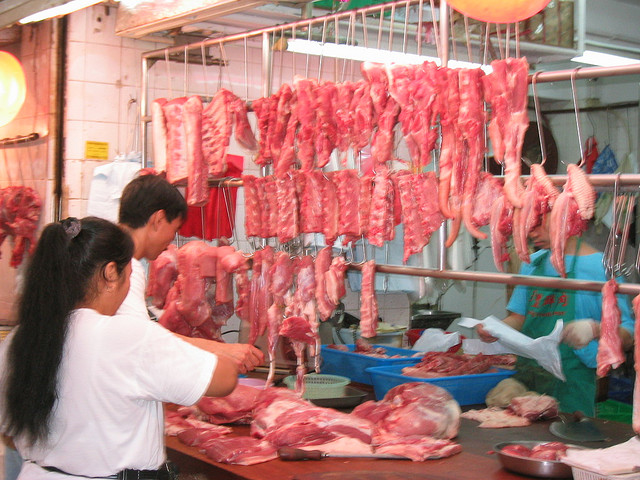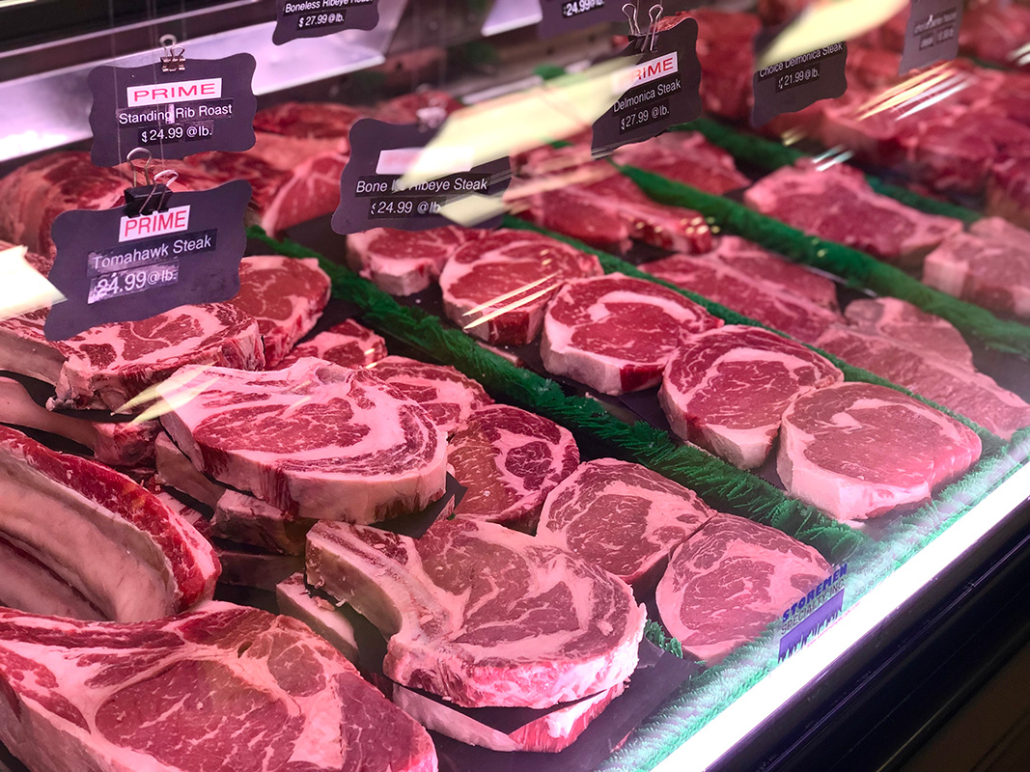Your Comprehensive Resource for Professional Tips on Browsing the Meat Market Scene and Making Informed Purchases
Browsing the world of meat acquiring can often feel like a complicated puzzle, with numerous cuts, grades, and labels including layers of details to the decision-making process. For those seeking to make educated choices and boost their culinary experiences, understanding the subtleties of the meat market scene is critical. From figuring out the distinction between prime and option cuts to untangling the enigmas behind different certifications, a wide range of expert pointers awaits those eager to unwind the secrets of the butcher's domain name. By mastering the art of choosing fresh, top quality meat and discovering to engage successfully with butchers, individuals can not just enhance the flavors on their plate yet likewise make certain choices that align with their preferences and worths.
Comprehending Various Cuts and Grades
When it comes to acquiring meat, comprehending the differences between numerous cuts and grades is important for making educated choices at the market. The cut of meat refers to the details muscle mass group from which the meat is sourced, while the quality is a high quality designation based on factors like marbling, inflammation, and maturation of the animal. It's essential to take into consideration the cooking approach when picking a cut and grade of meat-- for instance, well-marbled cuts like ribeye are fantastic for barbecuing, while leaner cuts like sirloin may be much better matched for roasting or braising.
Choosing Quality and fresh Meat
To ensure optimal taste and security in your dishes, it is vital to meticulously select fresh and high quality meat when buying at the market. When selecting fresh meat, look for cuts that have a dynamic shade, company structure, and are damp but not slimed.
Inspecting for appropriate labeling, such as USDA qualities or accreditations, can better ensure you of the meat's quality and safety and security. By being watchful in your choice procedure, you can delight in tasty and safe dishes made from fresh, top notch meat.
Decoding Labels and Certifications
Recognizing the labels and accreditations on meat products is important for making informed choices concerning the high quality and origin of the meat you purchase. When navigating the meat market scene, it is very important to look for labels such as "USDA Certified Organic," which indicates that the meat was produced following stringent organic requirements without making use of artificial chemicals, prescription antibiotics, or hormones. One more key label to expect is "Grass-Fed," which suggests the pets were fed a diet regimen mostly containing grass or forage. This tag frequently indicates a leaner product with higher degrees of omega-3 fatty acids.


Accreditations like "Animal Welfare Accepted" or "Certified Humane" indicate that the animals were elevated in gentle problems, with accessibility to outdoor areas and moral therapy. On the various other hand, "Non-GMO Project Verified" shows that the meat originates from pets that were not fed genetically modified organisms. By comprehending these tags and qualifications, customers can make even more moral and lasting choices when purchasing meat products.
Engaging With Butchers for Guidance
Making informed selections concerning the meat you buy can be further enhanced by looking for support from knowledgeable butchers that have useful expertise about different cuts, quality, and sourcing methods. Butchers are proficient experts that can provide understandings into the most effective cuts of meat for details meals, advise alternative options based on availability or budget, and offer advice on correct handling and storage to optimize freshness and taste.
Engaging with butchers permits consumers to ask questions about the resource of the meat, consisting of whether it is locally sourced, organic, grass-fed, or sustainably elevated. By cultivating a relationship with a trusted butcher, consumers can acquire a much deeper understanding of the meat they buy, making certain that it aligns with their choices and values.
Additionally, butchers can share cooking tips, recipe suggestions, and even butcher unique cuts to fulfill specific choices. Their expertise extends beyond simply selling meat; try here they can assist in meal preparation, section sizing, and provide suggestions on corresponding active ingredients to develop scrumptious and all-around dishes - Bagley Farms Meat Market. By leveraging the expertise and experience of butchers, customers can make more informed choices when browsing the meat market scene

Optimizing Value and Budgeting
When considering maximizing worth and budgeting in the meat market, it is crucial to assess the expense per serving and explore economical cuts that still use terrific taste and top quality. By understanding the Go Here price per offering, consumers can make informed decisions about which cuts of meat offer the ideal worth for their spending plan. One method to optimize value is to purchase larger cuts of meat and part them in your home, saving cash contrasted to pre-cut options. Additionally, choosing much less popular cuts, such as chuck or sirloin, can supply substantial cost savings without compromising on preference or tenderness when prepared correctly.
It is also beneficial to build a connection with regional butchers or meat vendors, as they might provide special deals or discounts to dedicated clients. By being mindful of expense, exploring alternate cuts, and leveraging discounts, consumers can extend their meat budget without sacrificing quality.
Verdict
In conclusion, understanding the various cuts and grades of meat, selecting fresh and quality products, decoding labels and qualifications, seeking guidance from butchers, and making best use of value and budgeting are crucial steps for browsing the meat market scene and making informed acquisitions. Bagley Farms Meat Market. By adhering to these expert ideas, customers can make well-informed choices when buying meat and ensure they are obtaining the finest worth for their money
When it comes to purchasing meat, understanding the distinctions between numerous cuts and grades is important for making informed selections at the market. The cut of meat refers Continued to the particular muscle team from which the meat is sourced, while the grade is a high quality designation based on aspects like marbling, inflammation, and maturity of the animal. It's essential to take into consideration the food preparation approach when picking a cut and quality of meat-- for example, well-marbled cuts like ribeye are wonderful for grilling, while leaner cuts like sirloin might be much better suited for toasting or braising.Understanding the tags and certifications on meat items is essential for making informed decisions about the quality and origin of the meat you buy. When navigating the meat market scene, it's crucial to look for labels such as "USDA Qualified Organic," which suggests that the meat was generated complying with strict natural standards without the usage of synthetic pesticides, antibiotics, or hormones.